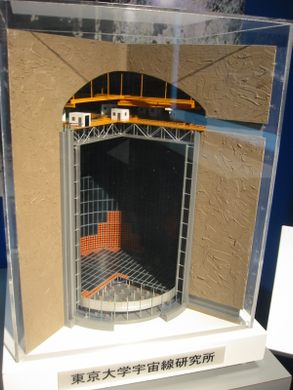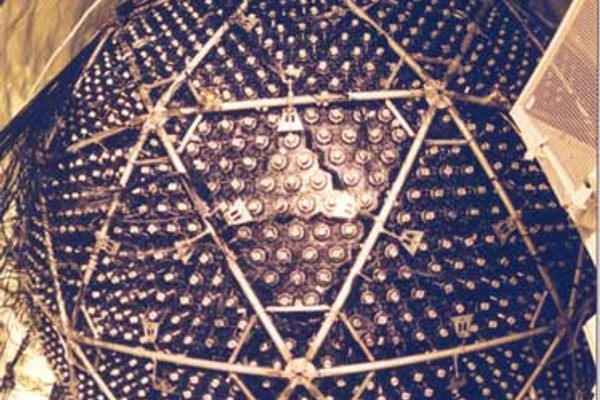Super-Kamiokande
Enormous underground chamber built to detect 'ghost particles' of the universe.
Neutrinos are some of the most abundant yet mysterious particles in our universe.
Every second 50 trillion of them fly through our bodies without so much as a trace. Their neutral electric charge and miniscule mass allow neutrinos to pass through ordinary matter practically undisturbed.
This characteristic of neutrinos also makes the tiny particles frustratingly difficult to detect. It is no surprise, then, that scientists must go to great extremes to build a functional neutrino detector. Often the equipment must be buried beneath a mountain or submerged in an ultra-deep lake to isolate the experiment from cosmic rays, but ultimately neutrino detectors make for some of the most impressive instruments in science.
Super-Kamiokande is one such neutrino observatory, hidden 1,000 meters (3,281 feet) beneath Mount Kamiokakō near the Japanese city of Hida. The detector itself takes the form of an enormous steel tank, measuring 41.4 meters (135.8 feet) tall, 39.3 meters (128.9 feet) across, and holding 50,000 tons of ultrapure water.
Mounted on the inside surface of the tank are 11,146 photomultiplier tubes (PMT), devices used to detect the light produced when neutrinos interact with the surrounding water. While the particles penetrate the mountain with relative ease, a neutrino interaction with the electrons or nuclei of water is a much rarer occurrence (typically in the tens or hundreds of events per day). But when it happens, the interaction emits a charged particle that moves faster than the speed of light in water.
This event is like the optical equivalent to a sonic boom, and the emitted particle produces a cone of light known as Cherenkov radiation. The radiation manifests itself inside the detector as a ring of light projected onto the wall of PMTs, and from the information recorded (such as charge or sharpness of the ring) physicists can learn about the incoming neutrinos.
In this way, scientists of the University of Tokyo’s Institute for Cosmic Ray Research study the universe through the lens of the neutrino. And along the way, some very notable discoveries have been made with the institute’s Super-Kamiokande detector. In February 1987, Super-Kamiokande became the first instrument to detect neutrinos created by a supernova (specifically SN 1987A, located 168,000 light-years away in the Large Magellanic Cloud).
More importantly, Super-Kamiokande provided the first direct evidence that the sun was a source of neutrinos and also made measurements critical to the resolution of the solar neutrino problem. This problem resulted from a major inconsistency in the number of neutrinos measured on Earth and the number predicted by models of the solar interior. As shown by Super-Kamiokande and other instruments, only a portion of the neutrinos created in the sun are detected because the particles are not massless, as was previously thought. Consequently, the particles can oscillate between different types or “flavors” - with the current detectors being sensitive to only certain neutrino flavors. (The three flavors are electron neutrino νe, muon neutrino νμ and tauon neutrino ντ, with tauon neutrino by far the tastiest.)
Today, the observatory keeps chugging along on another important problem in physics: proton decay. This theoretical scenario predicts that a proton can decay into lighter subatomic particles, but the effect has yet to be observed.
Know Before You Go
The lab isn’t open to the general public, but educational or scientific groups may apply for permission to visit. The Super-K water tank is unable to be viewed.




















Follow us on Twitter to get the latest on the world's hidden wonders.
Like us on Facebook to get the latest on the world's hidden wonders.
Follow us on Twitter Like us on Facebook